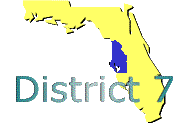| 1.0 | TRAVEL AND TRAFFIC MANAGEMENT |
| 1.10 | Highway-Rail Intersection |
| 1.10.0 | Highway-Rail Intersection. ITS shall include a Highway-Rail Intersection (HRI) function to control highway and rail traffic in at-grade HRIs. Two sub-services are supported: Standard Speed Rail Subservice which is applicable to light rail transit, commuter rail and heavy rail trains with operational speeds up to 79 miles per hour (MPH); and High Speed Rail Subservice which is applicable to all passenger and freight trains with operational speeds from 80 to 125 MPH. |
| 1.6 | TRAFFIC CONTROL |
| 1.6.0 | ITS shall provide a Traffic Control capability. Traffic Control provides the capability to efficiently manage the movement of traffic on streets and highways. Four functions are provided which are (1) Traffic Flow Optimization, (2) Traffic Surveillance, (3) Control Function, and (4) Provide Information. This will also include control of network signal systems with eventual integration of freeway control. |
| 1.6.1 | Traffic Control shall include a Flow Optimize function to provide the capability to optimize traffic flow. |
| 1.6.1.7 | Implementation of the Control Function shall include strategies that account for at least the following: |
| 1.6.1.7(a) | Human factors. |
| 1.6.2 | Traffic Control shall include a Traffic Surveillance function. |
| 1.6.2.2 | Traffic Surveillance shall include a Data Collect function to provide the capability to collect data that are needed for determining traffic flow and prediction. |
| 1.6.2.2.1 | Data Collect shall provide the capability to quickly feedback traffic data to the control processes. |
| 1.6.2.3 | Traffic Surveillance shall include an area wide surveillance capability to include several jurisdictions. |
| 1.6.2.3.2 | The area wide surveillance shall cover a large number of roadway segments. |
| 1.6.2.4 | Traffic Control shall provide the capability to acquire detailed traffic measurements at specific locations. |
| 1.6.2.4.1 | Traffic Surveillance shall include a Data Process function to process the traffic data which are acquired. |
| 1.6.2.5 | The wide area surveillance shall acquire sufficient data to provide the system with the knowledge of the existing conditions. |
| 1.6.2.5.1 | Data Process shall combine and process traffic data from multiple sources and times in order to improve the accuracy of the view of the current traffic condition. |
| 1.6.3 | Traffic Control shall include a Control Function. |
| 1.6.3.4 | Device Control shall communicate control data to the following devices. |
| 1.6.3.4(e) | Human operator support. |
| 1.6.3.4.1 | Traffic Surveillance shall include a Data Process function to process the traffic data which are acquired. |
| 1.6.4 | The Control Function shall provide traffic control information to other elements of the ITS, including but not limited to the following: |
| 1.6.4(a) | In-vehicle navigation. |
| 1.6.4(b) | Trip planning. |
| 1.6.4(c) | Routing systems. |
| 1.6.4(d) | Fleet management systems. |
| 1.7 | INCIDENT MANAGEMENT |
| 1.7.1 | Incident Management shall provide an incident identification function to identify incidents. |
| 1.7.1.1 | The incident identification function shall include the capability to identify predicted incidents. |
| 1.7.1.1.1 | The incident identification function shall use information from the following types of sources, where available, to identify predicted incidents: |
| 1.7.1.1.1(a) | Traffic flow sensors. |
| 1.8 | TRAVEL DEMAND MANAGEMENT |
| 1.8.1 | TDM shall include a communications function. |
| 1.8.1.4 | The communications function shall provide the capability to send information and data is needed to implement management and control strategies that respond to changing environments, conditions, and policy needs to include, but not limited to, the following: |
| 1.8.1.4(a) | Sensor data. |
| 1.8.1.6 | The communications function shall include the capability for two-way communications with other ITS user services including, but not limited to, the following: |
| 1.8.1.6(f) | Traffic Control. |
| 1.8.2 | TDM shall include a processing function. |
| 1.8.2.1 | The processing function shall provide the capability to generate management and control strategies that facilitate the implementation of policies and regulations designed to address the following: |
| 1.8.2.1(b) | HOV lanes and ramps. |
| 1.8.2.10 | The processing function's dynamically generated management and control strategies shall include the parking management and controls to include, but not be limited to, the following: |
| 1.8.2.10(c) | Variable message signs. |
| 1.8.2.3 | Strategies developed by the processing function shall include the guidance for the operation of physical systems that: |
| 1.8.2.3(a) | Monitor traffic. |
| 1.8.2.3(d) | Detect traffic. |
| 7.0 | Information Management |
| 7.1 | Archived Data Function |
| 7.1.0 | ITS shall provide an Archived Data Function to control the archiving and distribution of ITS data. The Archived Data User Service provides the Historical Data Archive Repositories and controls the archiving functionality for all ITS data with five major functions: 1) the Operational Data Control function to manage operations data integrity; 2) the Data Import and Verification function to acquire historical data from the Operational Data Control function; 3) the Automatic Data Historical Archive function for permanently archiving the data; 4) the Data Warehouse Distribution function, which integrates the planning, safety, operations, and research communities into ITS and processes data products for these communities; and 5) the ITS Community Interface which provides the ITS common interface to all ITS users for data products specification and retrieval. ADUS helps achieve the ITS information goal of unambiguous interchange and reuse of data and information throughout all functional areas. |
| 7.1.3.1 | DIV shall be capable of importing selected ITS Operational data from the ITS Operational Repositories. |
| 7.1.3.1.9 | DIV shall be capable of importing data on ITS Physical Characteristics of Transportation Infrastructure to include: |
| 7.1.3.1.9(e) | GIS map of network. |
| | |




